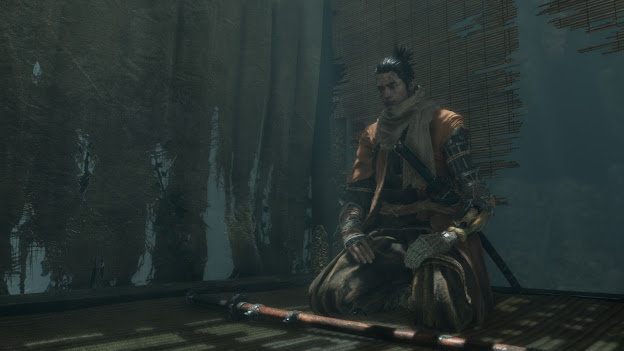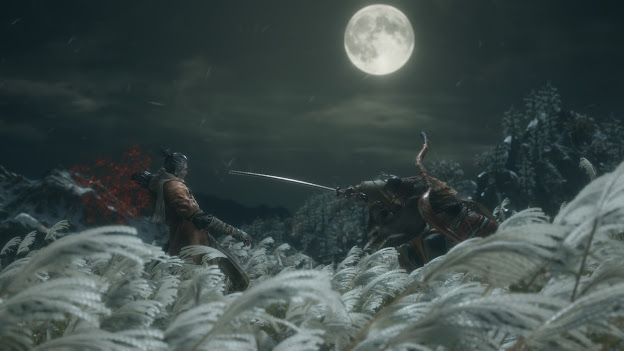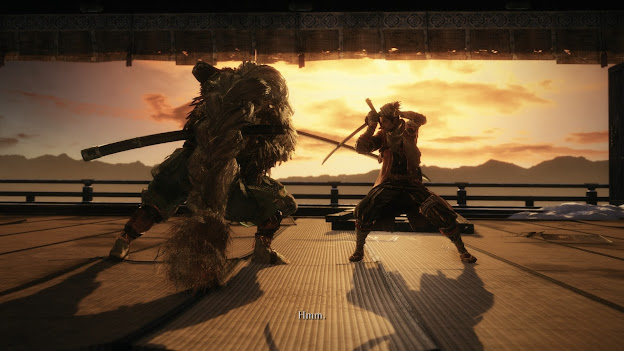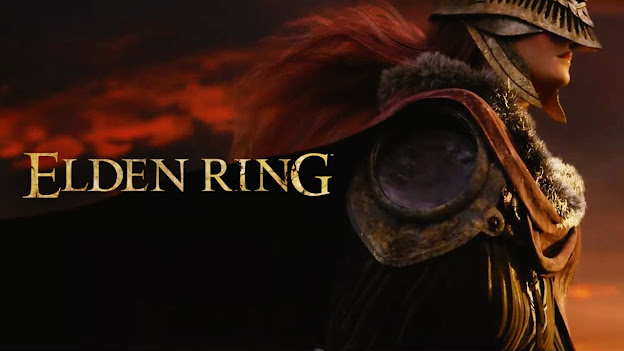Sekiro Review
Sekiro: Shadows Die Twice, developed by my favorite studio From Software, has been out for over a year at the time of writing this review yet I did not complete it until very recently, despite the fact that I got it on the day of release. While I could tell straight away that this was a quality title with excellent attention to detail I actually gave up on the game several times, believing this wasn’t a game for me (or even worse, that I had lost my passion for gaming completely). However passive exposure to the game over the months made me eager to play again. This is very similar to the experience I had playing Dark Souls for the first time (the first From Software game I ever played). For any souls fans out there, you know what I’m talking about. Once I finally beat the game the feeling of euphoria rushed through my veins which motivated me to write this review, the first review I’ve ever written. I could gush on forever regarding every little detail of this game but in order for this review to stay relatively focused I will mostly talk how this game truly immerses you in its world building.
Wolf, the playable character, is unable to permanently die thanks to the power of the blood of the Divine Heir. However, excessive deaths cause the power to stagnate. This results in friendly NPC:s slowly being afflicted with a disease known as the Dragonrot as you are literally sucking out the life force of the people around you to prevent yourself from truly dying. This is a great example of how this game seamlessly blends story with mechanics.
Wolf, Shinobi of the Divine Heir
Another example is a recurring boss that you fight in the beginning, middle and end of the game. The first time you meet you’re “supposed” to lose while the second fight is a tough challenge but in the end you emerge victorious. Lastly, in the third fight he’s a total pushover. His mechanics and movesets haven’t changed much, only you have. You get to personally feel how much better you’ve become at the game just as Wolf has become a stronger person throughout the story.
It certainly doesn’t get much more japanese than this
However the greatest hallmark of the story is how the world feels so alive doesn’t center around you. The story will unfold regardless if you were there to experience important character events and dialogues or not. By eavesdropping on conversations, exploring hidden areas or helping out other NPC:s you can get more insight into character motivations and backstory. This way your actions can even affect the plot but the story will play out regardless of your involvement and it’s up to you to put the pieces together of what’s really going on. This kind of storytelling is only possible through video games. You would never see a tv-series that has a different amount of episodes depending on who’s watching, giving different people different contexts in which to make sense of the story. But in video games it can be done to great effect and Sekiro does so magnificently.
This segways into just how well thought out everything in this game appears, down to the last detail. Especially in how everything just seems, I suppose, more “dignified” than you first assume. For example there was a moment in the game where I stumbled upon a handwritten note on a wall warning everyone about the headless man in a cave further on. The note mentioned how “our swords and spears did nothing to it!” This conjured an image in my head of a hulking headless giant roaring while beating its chest (how a man without a head would roar is beyond me but I digress). However as I entered the cave I got nothing of the sort. What I experienced could only be described as the manifestation of a fever dream, nightmare fuel in other words. The headless man was large, heavy and eerily silent. It walked towards me slowly as it filled the cave with a colorless mist slowing down my movements, It’s mighty sword fell on me over and over with the entire weight of the world pulling it down, my sword figuratively bounced of his skin as he seemed completely unaffected by it, I was unable to run away and the music will haunt my dreams forever. It wasn’t hard to imagine the main character whispering “I fear no man but that thing, it scares me.”
On the flipside though, the game also features some truly beautiful soothing moments as well. One location in particular made my jaw drop so hard I still occasionally have to crack it back into position. Cherry blossom trees adorned the temple ridden lands with sparkling waterfalls running down into the grand turquoise lake in the middle. Its slightly disfigured inhabitants wandered around, peacefully kicking ball and dancing. Sluglike noblemen played their flutes in harmony with the non-diegetic soundtrack. However don’t let the blissful facade fool you. Everyone and everything here will try to kill you with vicious intent if they set their eyes on you. The most blissful place in the game also happens to be the most dangerous. Everything is never quite as it seems in Sekiro. Indeed, the only character that always speaks truthfully throughout the entire game without any hidden agendas is an old crazy lady that at first glance only seems to spout senile gibberish. This once again shows how contrasting themes can complement each other for greater effect. A sum greater than its parts, if you will.
Any strong emotional intent only works in the presence of its opposite, otherwise there is no context in which to experience it. Bleakness loses its meaning if there’s no lushness to contrast it. This is why the terrifying moments in Sekiro feel so terrifying and the soothing moments so soothing.
Now I can’t talk about Sekiro without mentioning its difficulty and yeah, it’s hard. Very hard. In earlier From Software games I’ve pretty much been able to use my muscle memory from previous games to hone my abilities for each successive title. Let’s be honest, they’re not that different after all. In Sekiro I had to pretty much start from scratch. In previous titles you would either hide behind your shield or dodge away from enemy attacks. In Sekiro you have to clash blades with your foes, right in front of them, eye to eye. There is no particular technique to bring down this brick wall. You simply have to punch it repeatedly until it breaks (or it breaks you). While Dark Souls, Demon’s Souls and Bloodborne can be seen as different dialects, Sekiro is a completely different language altogether and you have to git gud at it, fast. Almost every boss feels more difficult than the last. However once you beat them you have mastered their attack patterns to such a degree that you question why they ever gave you trouble to begin with. However I will never forget the feeling of facing them in my first playthrough. Getting stuck on a boss meant that you would explore every nook and cranny to get stronger, find new NPC:s, unravel new mysteries, discover optional mini-bosses and areas to make you stronger. That’s when the game truly shines. For example, once I got stuck in a boss fight against a large bull. After dying 8 scivillion times I decided to give it a break and explore some other areas a bit out of the way. And lo and behold, I found a merchant selling firecrackers whose description text mentioned that they’re good for startling animals. Putting two and two together I figured I could use them to receive an edge against the bull which is exactly what happened. The fight was still challenging but at least now I had a winning chance. There are always many tools and gadgets at your disposal (if you’ve explored enough to find them) but there’s never an easy mode a la beat-the-boss-with-one-gadget-one-trick-pony-style. YOU have to find the gadget yourself, YOU have to figure out how to use it in the right context and YOU have to get good at the game to know the exact timing in which to use them. Git gud, in other words.
*Doubts in japanese*
There are things I could nitpick of course but none of it tarnishes the experience in the grand scheme of things. If there’s any real criticism to be had I would have to direct it one of the games 4 endings, namely that it completely skips the third act. On paper this actually sounds like an intriguing idea. Kind of if you played your cards right and did some obscure tasks you could “outsmart” the game and receive a premature ending. However the only thing that grants you this ending is a single dialogue option in a mandatory conversation. There is no warning that this choice will lead to you missing out on a lot that the game has to offer. Half of new players will likely receive this ending as their first, all based on an uninformed choice they made halfway through the game. This ending resolves no plot threads and cuts off arguably the best parts of the game. I’m bringing special attention to this cause this was the first ending I experienced. While it felt anticlimactic I instantly knew there was more to the game than what was led on (this is a game directed by Hidetaka Miyazaki after all). I did some digging online and indeed, I had missed out on about 4 mandatory bosses and some of the most interesting locations in the game. If you haven’t played the game or come very far and this revelation worries I will just say this to help you avoid this ending: Do not trust the Owl! All in all I have to say that this didn’t deter me from the game at all. In fact, it made me more motivated than ever to play it again! For several days I played it from dawn to dusk (sometimes from dawn to dawn).
Rarely do I ever experience a game that has invested me so fully that I forget basic necessities like food and sleep. This is a piece of art that I will definitely return to in the coming years and I surely can’t wait to see what they have to offer in the upcoming Elden Ring.
From Software sure seem to have a thing for severed limbs…



